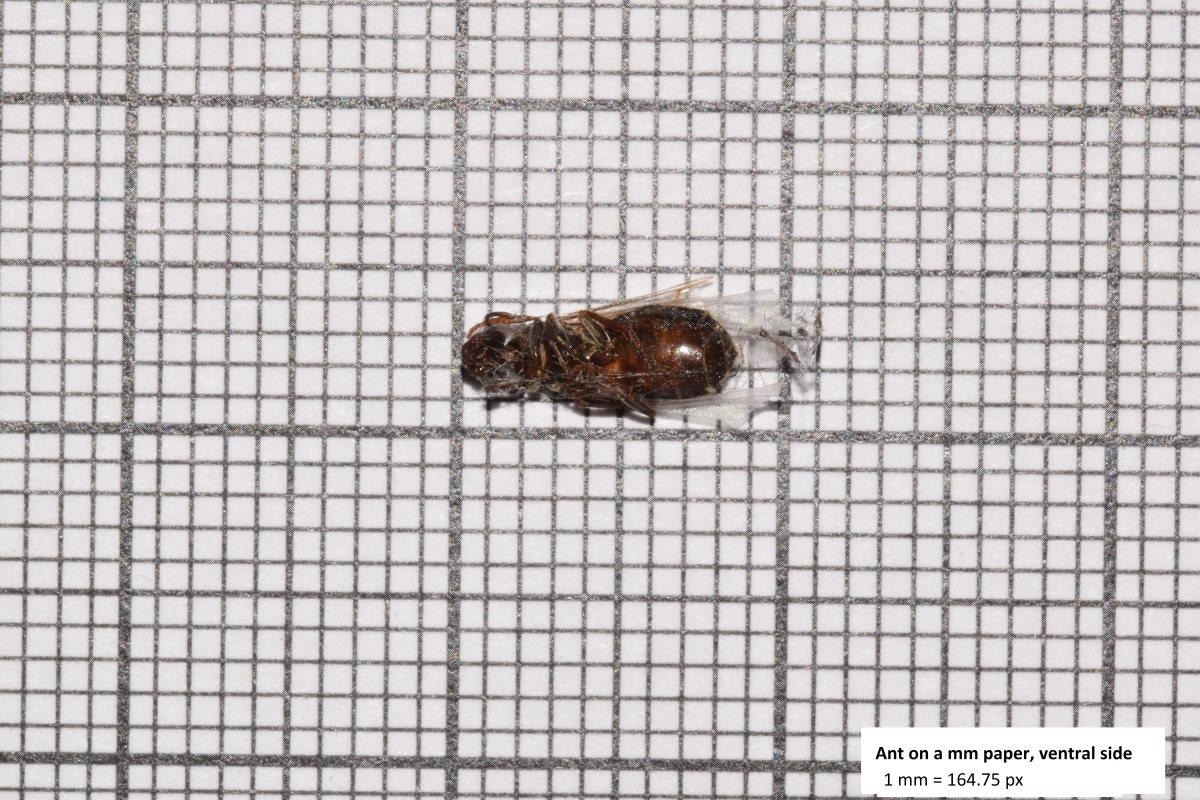Reviewed by Alex SmithAug 2 2021
A new X-ray imaging technique has been identified by researchers from the University of Turku based on the coloring abilities of the natural mineral hackmanite.
 Body of a dead ant photographed with a DSLR camera on top of graph paper. Image Credit: Sami Vuori.
Body of a dead ant photographed with a DSLR camera on top of graph paper. Image Credit: Sami Vuori.
The team also revealed the reason behind the color-changing aspect of the mineral when exposed to X-rays.
Hackmanite is a natural mineral exhibiting glow in the dark. It also changes color from off-white to violet or pink upon exposure to UV rays. The latest study focused on understanding the coloring behavior of the mineral that was subjected to X-ray exposure.
Previous studies had published initial results about the way hackmanite changes color upon exposure to X-rays, but it was unclear why and how this coloring came to be and whether this feature could be useful somehow. We were the first to attempt X-ray imaging using a surface made of hackmanite as the image plate, and the results were very exciting.
Mika Lastusaari, Docent, University of Turku
A research team working on intelligent photonic materials, guided by Lastusaari, carries out breakthrough research on the materials featuring color- and light-related characteristics at the Department of Chemistry at the University of Turku.
The team developed hackmanite synthetically, allowing them to regulate the properties of the materials and make them suitable for various applications like adding or replacing atoms in the fundamental structure of the materials.
In this research, we studied the behavior of four types of synthetic hackmanites upon exposure to X-rays in the Karlsruhe synchrotron radiation facility in Germany using a particle accelerator which generates X-rays with tunable energy. All of the samples were positive surprises, and we were able to receive valuable information about how adding different atoms in the basic structure impacts the coloring abilities.
Sami Vuori, Doctoral Candidate, University of Turku
“We also noticed that the mechanism of color-changing occurs by X-rays exciting the inner shell electrons, unlike with UV radiation, which causes only the loosest electrons of the outer shells to participate in the coloration,” added Vuori.
Measuring Radiation Doses and Imaging with the Help of Hackmanite
The researchers consider hackmanite as a miracle material because of its potential uses. Currently, the mineral’s usage repertoire will include X-ray imaging as proven by an X-ray image of a dead ant.
Using hackmanite for imaging has the advantage that it does not require expensive analysis tools for the image to be seen: you can see the image with your own eyes and record it with a camera. As an example, this photo has been taken with a regular DLSR camera after exposure to X-rays.
Isabella Norrbo, Doctor, University of Turku
“However, its best feature is that the hackmanite film in the photo is not a single-use film: the image can be cleared with the help of light or heat, and a new object can be imaged with the same film,” added Norrbo.
Mika Lastusaari and Sami Vuori jointly concluded, “The writers of our research article include several experts from the optical field as well as computational chemistry, and not only is it international, it also links the basic research and innovation perspectives.”
The study was performed in collaboration with the French University of Lyon, Karlsruhe Institute of Technology, and the Brazilian University of São Paulo.
Journal Reference:
Vuori, S., et al. (2021) Detection of X-Ray Doses with Color-Changing Hackmanites: Mechanism and Application. Advanced Optical Materials. doi.org/10.1002/adom.202100762.